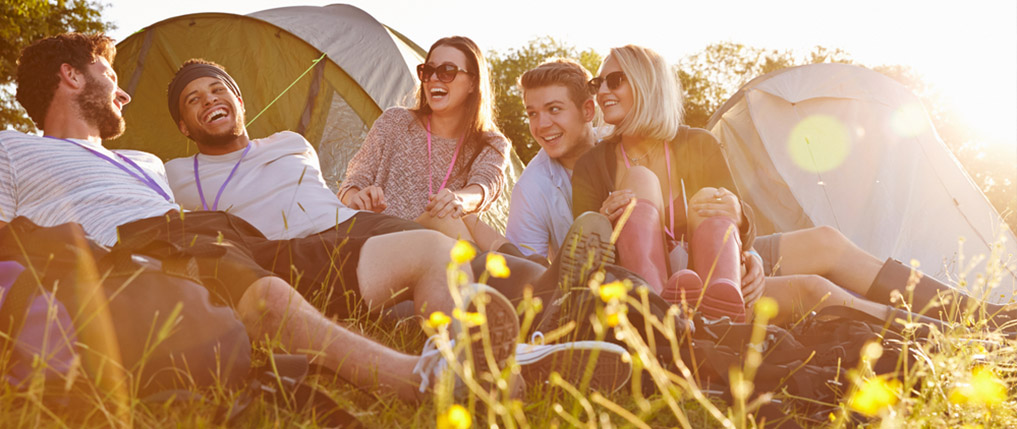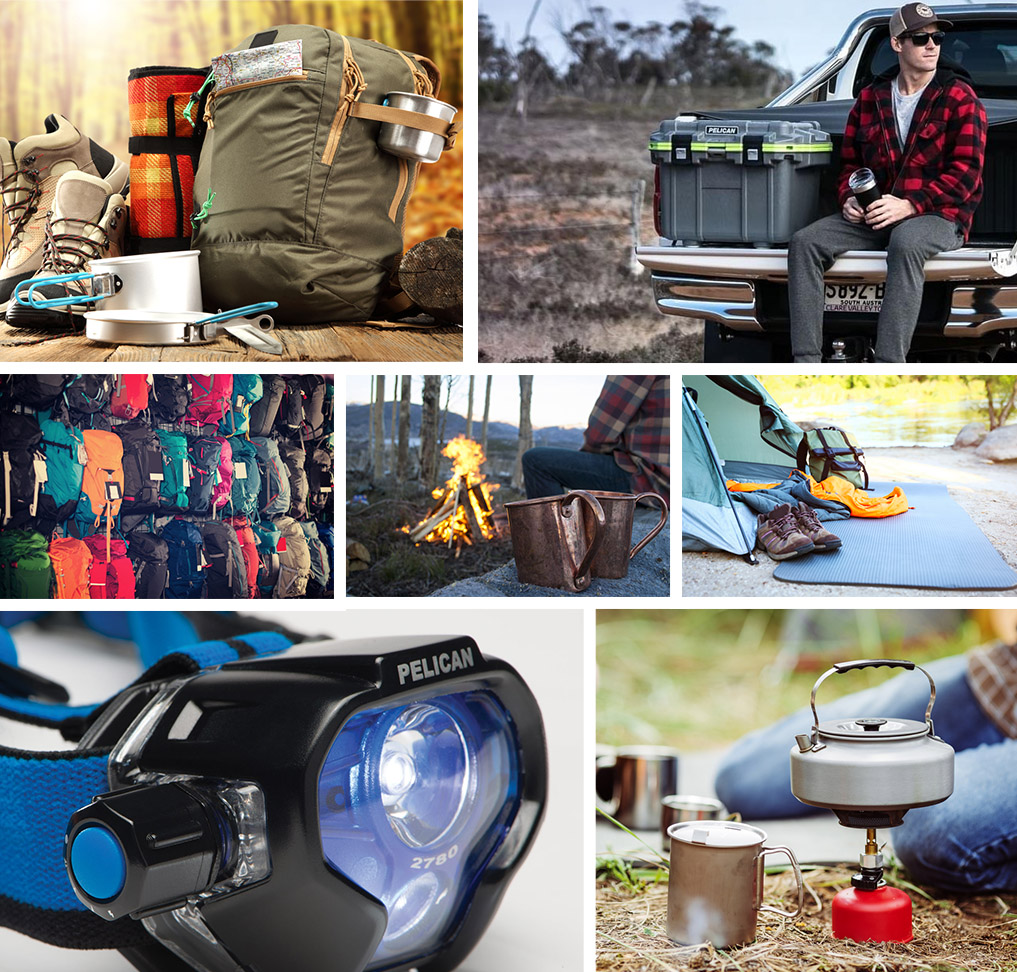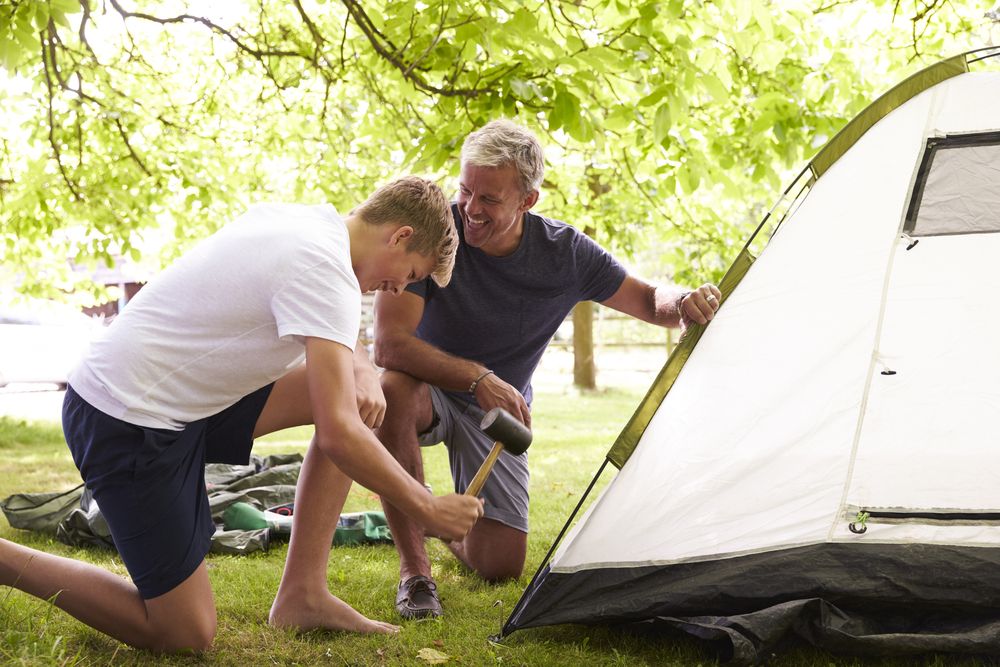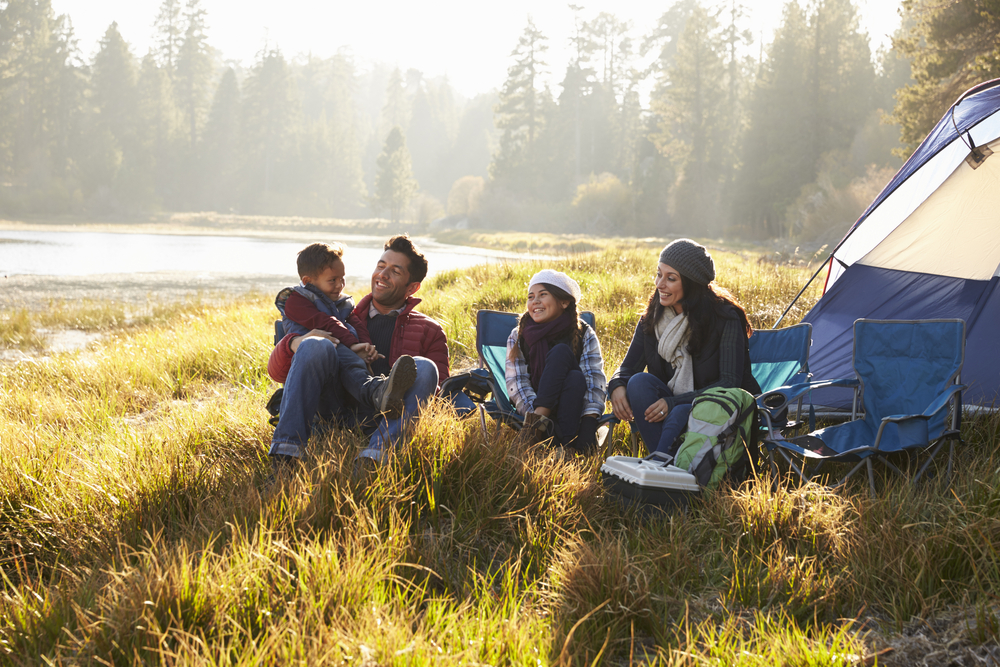First Time Camping? Here's What You Need to Know
February 19, 2021

Camping offers a way to escape the grind and get out in the great outdoors. But if you’ve never been camping, even as a scout or young child, it can feel a tad bit intimidating and overwhelming. What kind of gear do you need? How do you cook? Furthermore, what do you cook? But don’t worry! Camping is pretty simple, especially once you get the hang of it.
First and foremost, when starting out, car camping is recommended. As opposed to backcountry camping or kayak/canoe camping, a car can provide a basic convenient means of transportation that allows you to pull up straight to your site without having to pack in lightweight gear or go great distances. For a beginner camper, joining a group of camping enthusiasts is the best way to start. Tag along and see if you like it, using their equipment before investing in your own. Plus, seasoned campers can share stories and tricks they’ve learned along the way.
It’s important to know what to bring camping and how to choose a site, ensuring your first-time camping experience is a successful and enjoyable one. From must-have gear to planning meals and choosing a site, here is everything you need to know.

Must-Have Camp Gear
Before you set off on your first camping trip, you need to acquire the proper gear and equipment. Other than a fire pit, picnic table and possible potable water and bathrooms, you’ll need to recreate a home-like space. You’ll need shelter, but also a means of cooking, preserving food and staying warm.
Below is a list of must-have camp gear and pieces of equipment that will guarantee to make your camping trip go smoothly and also bring some creature comforts of home. Keep in mind that you don’t have to drop loads of cash on a first-time camping trip. Instead, you can borrow from friends, relatives and even rent items like tents, pads and camp chairs from local recreation stores. This is also a smart option for those who are just not sure yet if camping is an activity they will enjoy.
So, whether you’re borrowing, renting or buying, here are the must-have camp gear items and some tips on how to make your selection.

Tent or Shelter
One of the most essential pieces of camping gear you’ll need is a tent or shelter of some kind. If you plan to go solo camping, all you need is a bivvy, a one-person tent or a hammock. In fact, hammock camping is a wonderful, lightweight alternative and exceptionally comfortable.
However, if it’s you and a friend or partner, it’s recommended to get a three-person tent, which allows plenty of space for two people, plus spare room to keep backpacks dry. Of course, the larger the group, the more spacious the tent. A six-person tent is more suitable for growing families.
If you prefer to stand up in the tent – when getting dressed, for instance – check the tent’s height. Make sure the tent also has a vestibule to store muddy shoes and gear outside. If it’s a smaller tent, two doors allow easy egress instead of climbing over your tentmate.
Once you choose a tent, practice setting it up. This is not only to become familiar and quicker with the process, but to ensure all the parts are intact and unbroken. This is the last thing you want to find out at the campsite! Also, don’t forget to buy a footprint, making sure it’s appropriately sized. Too big and it will catch and pool rain under the tent. Too small and it won’t protect up to the edges.
Sleeping Bag
A good sleeping bag should keep you warm when temperatures drop at night. Check for the temperature rating and select a three-season bag at a minimum. A three-season sleeping bag should be enough to enjoy camping in the spring and fall – the perfect time! However, you can get away with a summer bag during balmy summer nights.
Many hardcore backcountry campers choose a mummy-style sleeping bag. But for your first time camping, a regularly shaped sleeping bag will do just fine. Plus, you don’t feel constrained or claustrophobic on your first night sleeping in a tent.

Sleeping Pad
Sleeping pads act as the mattress, smoothing out all those rocks and roots beneath the tent. But they do much more than that! Sleeping pads also provide some insulative qualities, keeping your body heat from escaping. As tempting and glampy as they appear, stay away from air mattresses. They practically suck the heat out of your body. When choosing a sleeping pad, compare the thickness and the R-value, which measures the insulation. If you appreciate the idea of being off the ground, which might be your reasoning for an air mattress, swing for a cot also.
Lighting
Campgrounds are not designed to illuminate sites like parking lots, and that’s part of their charm! So you will need to bring your own, such as solar-powered lanterns and an LED headlamp. Unlike flashlights, a hands-free headlamp allows you to get around safely. If you fall over a root, your hands will catch you! Plus, it will enable you to cook in the dark easier. A fire is always good for ambient light and staying warm.

Stove and Fuel
On a first-time camping venture, keep cooking simple. Choose a two-burner propane stove that can simultaneously boil a kettle for hot beverages while also cooking eggs or bacon. Pack extra fuel canisters and a lighter. Like the tent, ensure your stove works appropriately before hitting the road.
One word of caution: While it may seem effortless to cook hot dogs over the fire, don’t rely on just that! Even if you know how to build a fire, rain can easily cancel dinner plans. So always carry a stove as a backup.
Cooler
Keep provisions and beer chilled and preserved with a quality cooler. Pelican makes some of the most durable coolers available. Choose a hard case with foam insulation and you’ll keep ice lasting for days. Ideally, though, limit the amount of food or drinks that need to stay chilled.
Cookware
To cook, you’ll need cookware, utensils, plates and anything else you need to eat. But don’t bring dishes and flatware from home. Instead, do yourself a favor and purchase a mess kit. The exception to the rule is cast iron cookware designed to take a beating and last for generations.
For clean-up, you’ll also need a scrubber, biodegradable soap and a towel to dry. If it’s just a few campers, this is more than sufficient. But when cleaning cookware, plates and utensils of an entire family, a collapsible kitchen sink wash tub can help make clean-up quicker. Lastly, get yourself a big plastic bin to store cookware, stoves and more.
Camp Chairs and Hammocks
While most campsites offer a picnic table, sometimes they just don’t cut it. On chilly evenings, camp chairs can bring you closer to the fire. Plus, you can fold them up and take them with you to the campground’s beach or other activities. Choose a mesh camp chair that dries quickly after rain. Hammocks also make incredible naptime getaways or a place to read under a shade tree. Just make sure there are no regulations against tying them to trees.

Campsite Attire
In general, wear clothes you don’t mind getting dirty. Other than that, there are a few considerations. For starters, you want to wear layers. While the midday might be hot and call for a breathable moisture-wicking T-shirt on a hike, the evening temperatures can drop cold enough for long underwear, wool socks and a beanie. Your clothing’s material is important, too. Cotton fabrics should be avoided, as they tend to absorb moisture that can make you cold.
You also want to pack durable boots or hiking shoes, although a pair of sandals for midnight bathroom runs are incredibly convenient. A water-repellent outer shell is also essential to keep you dry during spouts of rain.
Toiletries and First Aid Kits
Like any trip, you’ll also need to pack toiletries, medications and hygiene items. Pack a towel, too. However, don’t forget to pack a first aid kit. You can find a variety of first aid kits at your local recreation store, complete with bandages and ointments for things like scrapes, cuts, bee stings or insect bites. Speaking of which, besides your essential toiletries and first aid kit, don’t forget items like sunscreen and insect repellent.
Campground bathrooms often provide basics like toilet paper. But for safety measures, bring a roll or two just in case they run short on supplies.
Planning Meals
For your first time camping, keep the meal plan simple. Getting used to your new equipment, stove and cookware might take time. Adding the stress of cooking a gourmet meal for the entire family or even just yourself can turn into frustration or, worse, unsafely cooked food. When you feel like taking it up a notch, carry take-out back to the site or grab a hearty breakfast at a greasy spoon diner on your drive home instead.
So do yourself a favor and think hot dogs, hamburgers and even freeze-dried or premade meals. Pack easy-to-make boxes and canned side dishes like mac and cheese or baked beans. Aside from main meals, pack some grab-and-go snacks like GORP, dried fruits, granola bars and apples. And, of course, don’t forget the fireside treats – s’mores!
Aside from the cold ones in the cooler, be sure to pack other drink options like coffee, tea and cocoa for the kids. Making decent camp coffee also takes patience. Luckily, percolators and instant coffee can remove most of the work.
Leaving food at a campsite will attract critters. Never leave food or even garbage out overnight. If you plan to camp in bear country, also make sure you hang food 200 feet away from the site or keep it in the provided bear locker. Otherwise, just make sure to put any food back in the car when not in use (not just overnight).

Find Your First Campground
A lousy campground experience can quickly ruin a first-time camping trip. In turn, it might sour your camping dreams and make you never want to see a tent again. So do your research and plan the trip well in advance. That way, you can snag a fantastic site at a campground with gorgeous views.
Check out these places to find the perfect camping spot:
One extra fun tip? While many government websites only show photos of the campground’s amenities, CampsitePhotos offers a search database where you can see the exact site before you book. Take notice if it has a table, fire ring and flat area for the tent. If it has a view, too, you’ve found some prime campground real estate!
If the campgrounds appear to be fully booked, search for ones that are open on a first-come, first-served basis. These types of campgrounds make it easier to snag a site. Just be sure to call ahead and see when the best check-in time might be to beat the rush.
Backcountry camping and dispersed camping are also viable options. However, they require some advanced wilderness survival skills, which may be unsuitable for your first time camping. As a beginner, it’s best to get acquainted with the camping lifestyle first before you go venturing out into the woods. Backcountry camping requires skills like learning how to navigate, as well as finding natural water sources and treating the water for drinking. So stick to the basics first. You can always try this camping method down the road.
Enjoy Your First Time Camping Trip!
The whole point of camping is to get in touch with nature. But how each person does so varies. To some, it’s a hike. For others, it’s a nap in a gently swinging hammock. Either way, the important thing is to make your first time camping a stress-free and enjoyable experience. Now go plan your first camping trip!

SIGN UP FOR EXCLUSIVE OFFERS
Sign up for our newsletter and get exclusive access to new product launches, special offers and much more.
RELATED BLOGS















